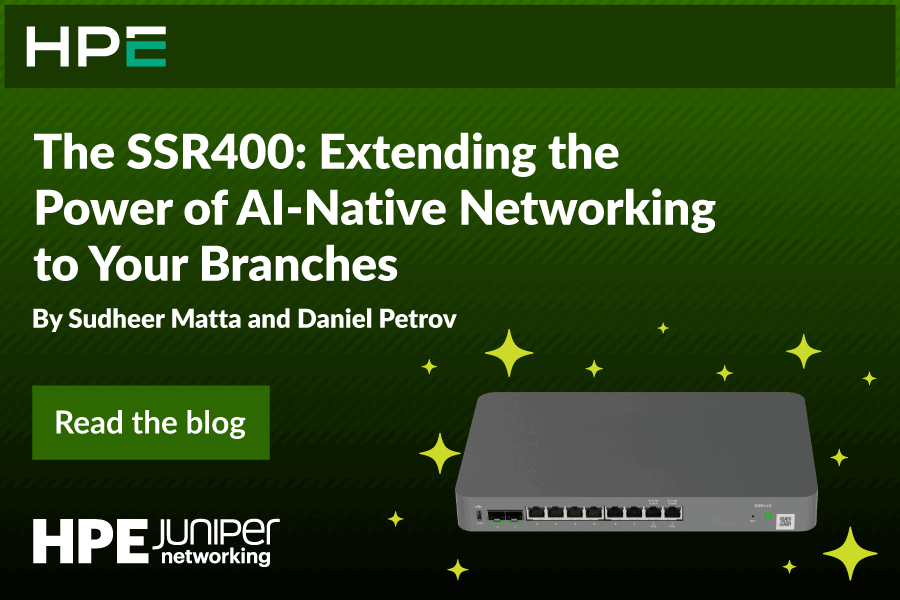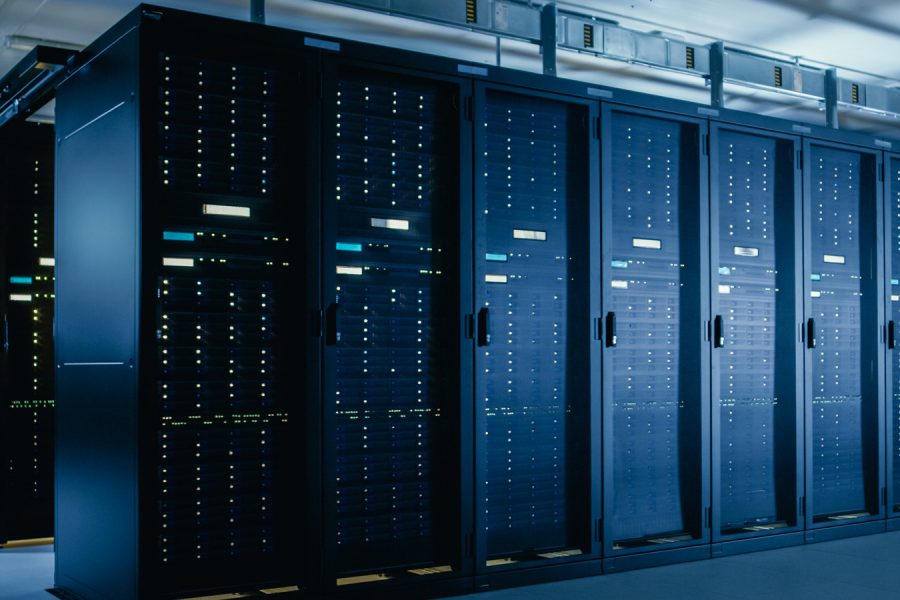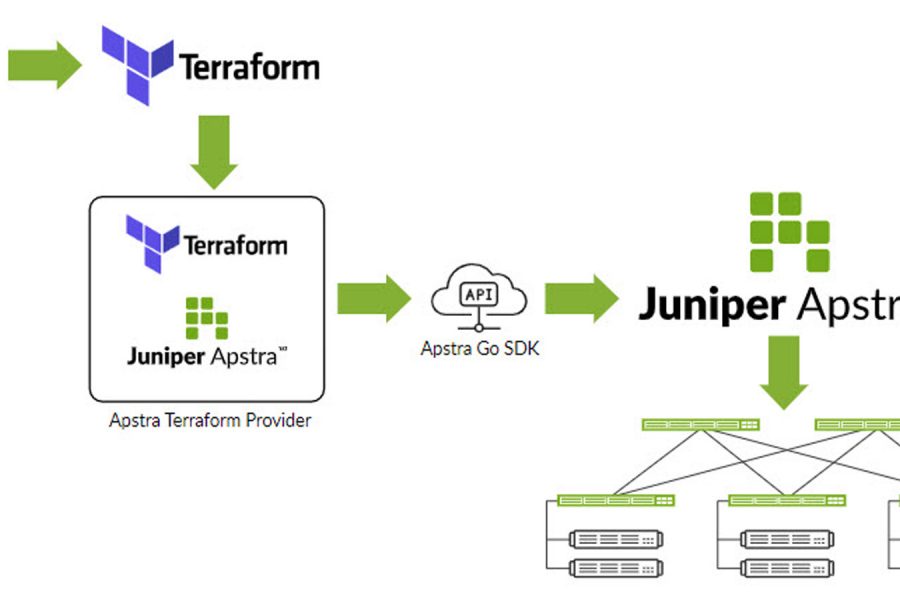As the Spanish-American philosopher, poet, novelist and humanist George Santayana once said, “Those who cannot remember the past are condemned to repeat it.”
These words have rang true for the telecommunications industry for years as traffic growth continues to rise exponentially and as the cost-per-bit economics have not kept up with traffic growth until now. We believe that Juniper Networks’ 400GbE strategic roadmap across routing and switching will fundamentally change the game and deliver non-linear benefits in the battle to address the cost-per-bit economics.
For many years, the only way to substantially impact price-per-bit in the network was to drive volume up or wait for a shift in technology. By increasing manufacturing volume, vendors were able to drive component costs down and those savings were ultimately passed on to the end customer.
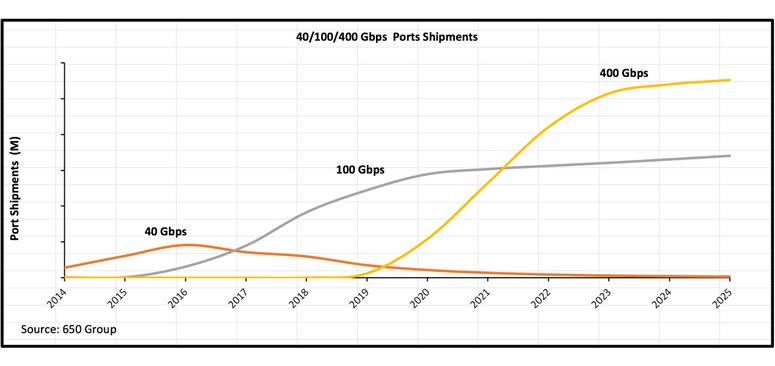
While significant technology shifts in optics sizes, or silicon moving to smaller dies, have driven performance densities up, the economic benefits are not typically realized until two technology revolutions later, at which time the cost-per-bit economics of the current generation become more efficient than the previous generation.
Juniper has a reputation for confronting—and solving—some of the industry’s most difficult problems. The greatest networking challenges often revolve around not just engineering, but also economics.
Two critical variables influence price-per-bit: speed and density. In order to influence interface speeds and density by way of pluggable optics, Juniper aspires not only to drive the industry standards that define these technologies, but also to own the silicon innovations, such as Penta, ExpressPlus and Q5 that deliver the right blend of cost and features per use case. As an example, early this year at OFC 2018, Juniper pushed the QSFP-DD spec for 400GbE to maintain the same interface densities established with 100GbE, thus allowing silicon development to stay in lock-step with optical densities.
Today, Juniper announced the first set of innovative products in our comprehensive 400GbE roadmap that fundamentally changes the cost-per-bit equation for customers across IP transport, WAN services and data center switching. These innovations introduce a new internet speed at the appropriate form-factors needed for cloud service providers, carriers and enterprise customers, with limitless possibilities by ensuring high-density 400GbE solutions on day one, thereby addressing the economic issue right out of the gate.
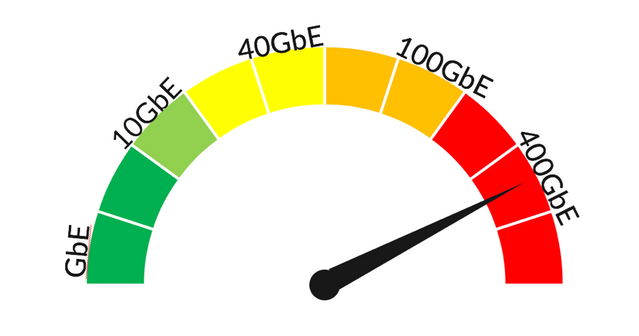
Customers will realize the economic benefits of a 400GbE solution that breaks the historic cost-per-bit economics cycle that has been seen time and time again, as well as gain the investment protection they covet with Juniper solutions across the board. Customers who deploy 100GbE today will find comfort knowing they can seamlessly upgrade to 400GbE when ready by merely swapping out an existing QSFP28-DD optical pluggable and replacing it with a QSFP56-DD optical pluggable in the newly available PTX10003 and QFX10003 platforms. Furthermore, Juniper’s commitment to standardize MACsec encryption on all future 100GbE and 400GbE interfaces gives our customers peace of mind.
Delivering routing and switching platforms that offer investment protection when transitioning from 100GbE to 400GbE (Juniper’s 400GbE Engineering Prowess on Display at Verizon) will also inspire our customers to pursue new applications – thanks to the significant amount of bandwidth now available to them. Hollywood film studios, for instance, can revolutionize how they handle the production and distribution of 8k and eventually 10k video at 142.56 Gbps[1] and 178.20 Gbps[2] per stream, respectively. The construction of a Deep Neural Network (DNN) that uses AI to develop medical breakthroughs such as predictive lung-disease models derived from chest X-Rays could eliminate the need for invasive exploratory surgeries[3].
On a more practical level, the technology will also enable public cloud providers to improve customer experience by providing sufficient backbone bandwidth to handle server traffic at 2x50GbE today and 2x100GbE in the near future with 100 percent utilization, and is designed to reduce costs by more than the 11 percent year-over-year[4] experienced over the last decade. Moreover, mobile traffic volumes continue to skyrocket due to the production of both traditional and non-traditional video content – like Fortnite Battle Royale, which is on track to reach 18 million minutes of watch time by 2019, completely dominating all other streaming gaming on the Twitch platform. In the coming years, new services like these will continue to emerge and consume the new capacity ceiling.
At Juniper, we’re used to solving hard problems with world-class engineering. However, as we’ve seen, engineering is multi-dimensional. Our 400GbE roadmap will not only usher in a new era of performance, we believe it will also fundamentally improve the economics of networking.
Forward-Looking Statements
Statements in this blog post concerning Juniper Networks’ prospects, future products and expected performance, and expected benefits of our products to users, including compatibility, functionality, performance, and cost benefits, are forward-looking statements within the meaning of the Private Securities Litigation Reform Act that involve a number of uncertainties and risks. Actual results or events could differ materially from those anticipated in those forward-looking statements as a result of certain factors, including delays in scheduled product availability, incompatibility of technologies, the company’s failure to accurately predict emerging technological trends, and other factors listed in Juniper Networks’ most recent report on Form 10-K and Form 10-Q filed with the Securities and Exchange Commission. All statements made in this blog post are made only as of the date of this blog post. Juniper Networks undertakes no obligation to update the information in this release in the event facts or circumstances subsequently change after the date of this blog post.
In this blog post, we may disclose information related to our development and plans for future products, features or enhancements (“SOPD”). SOPD information is subject to change at any time, without notice. Except as may be set forth in definitive agreements, we are not providing any assurances, or assuming any responsibility, that future products, features or enhancements will be introduced. Except as may be set forth in definitive agreements, customers should not base purchasing decisions upon reliance of timeframes or specifics outlined in an SOPD, because we may delay or never introduce the future products, features or enhancements.
Juniper Networks, the Juniper Networks logo, Juniper and Junos are registered trademarks of Juniper Networks, Inc. and/or its affiliates in the United States and other countries. Other names may be trademarks of their respective owners.
[1] Provided by Extron Electronics 4K Data Rate Calculator @ https://www.extron.com/product/videotools.aspx
[2] Provided by Extron Electronics 4K Data Rate Calculator @ https://www.extron.com/product/videotools.aspx
[3] CheXNet: Radiologist-Level Pneumonia Detection on Chest X-Rays with Deep Learning @ https://arxiv.org/pdf/1711.05225.pdf
Using Microsoft AI to Build a Lung-Disease Prediction Model Using Chest X-Ray Images
[4] Kleiner Perkins 2018 Internet Trends Report























